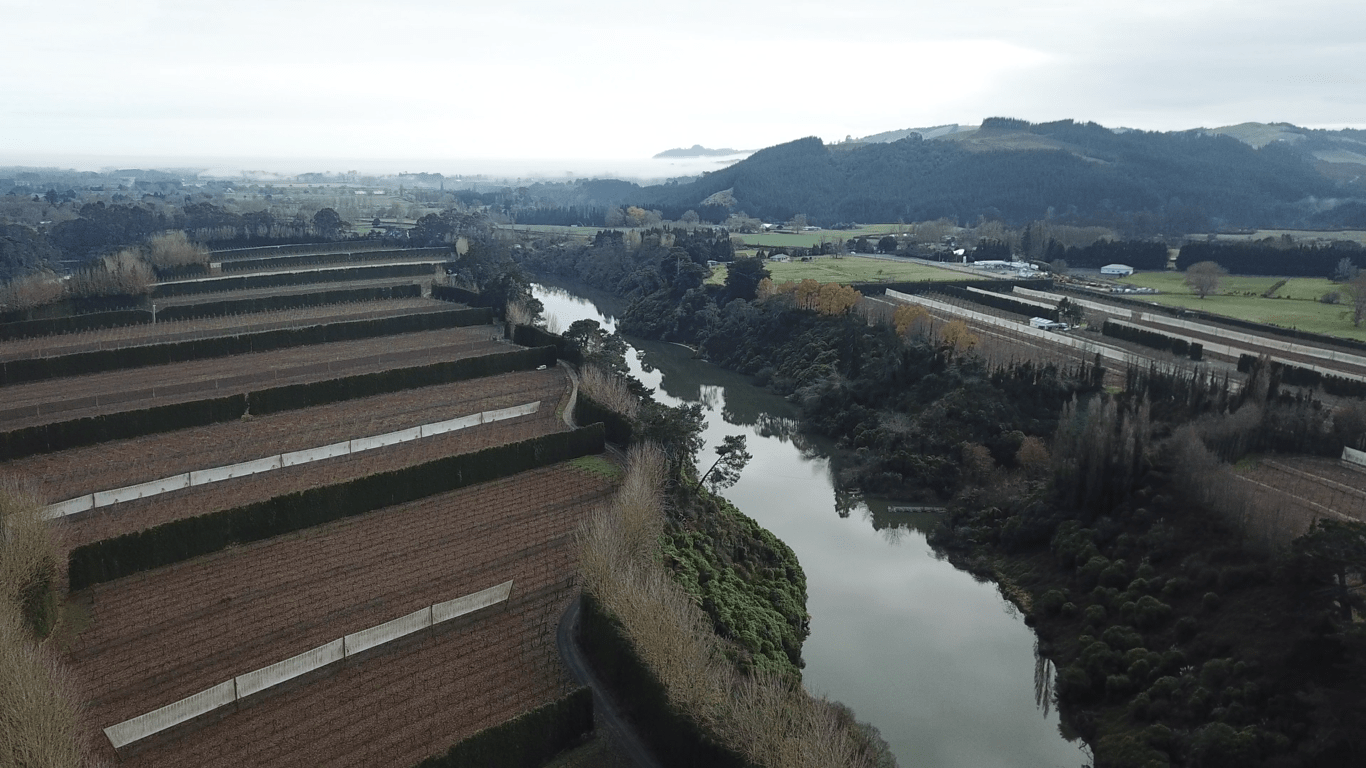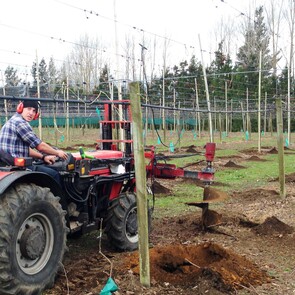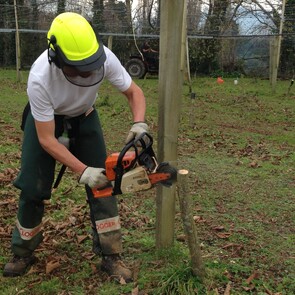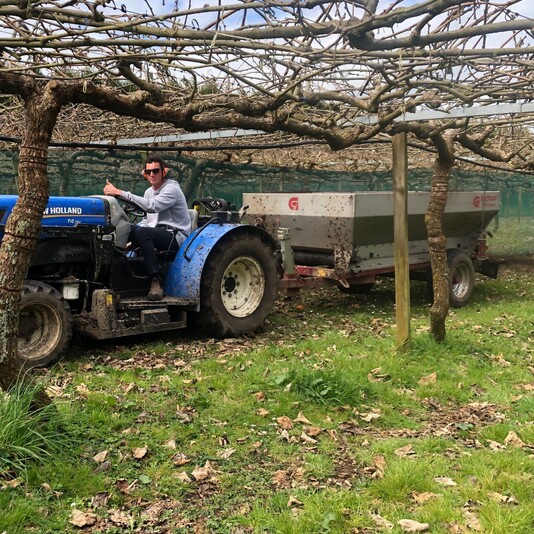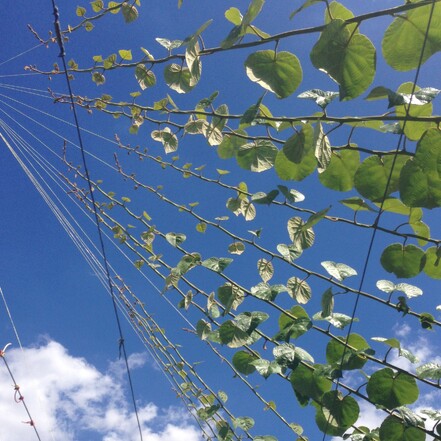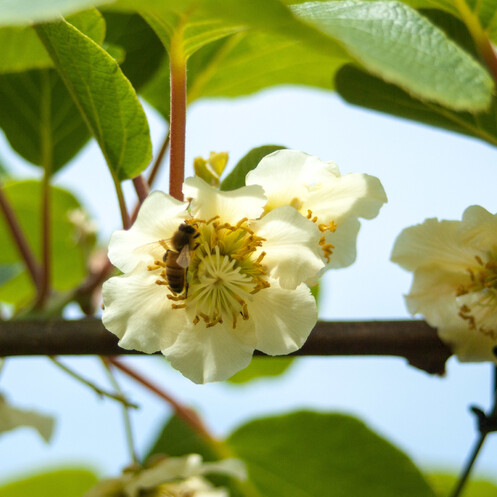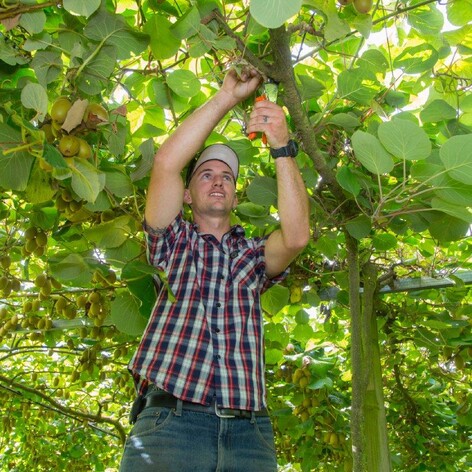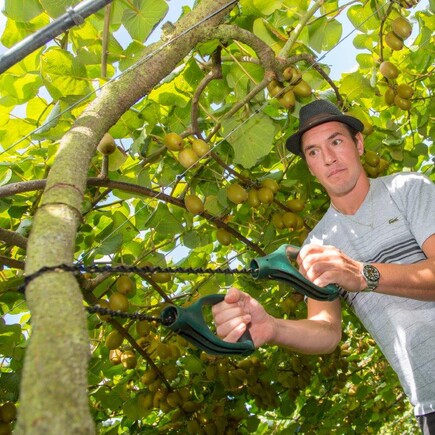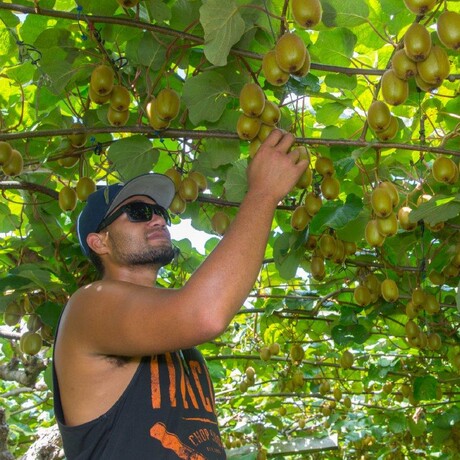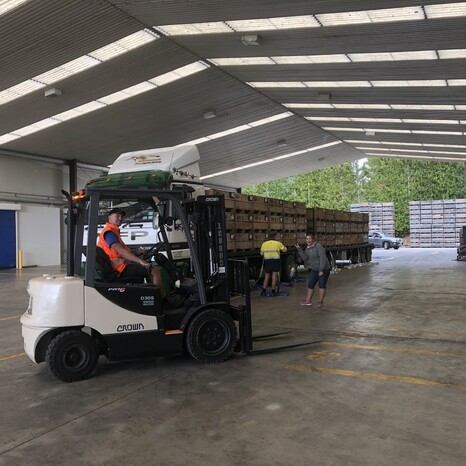Growing and Orchard Management
A Year-Round Effort
Although it may appear as easy as just picking and packing fruit into a box, kiwifruit requires attention to detail all throughout the year. From vine work in the field, to the logistics of moving the product off the orchard, careful planning and execution of tasks at key times make all the difference in horticulture.
Greenfield Development
Starting from an empty field has become a strength of WFP. Our ability to transform a bare site into a full and flourishing orchard is something we take pride in.


Winter Maintenance
Like most things, orchard structures are subject to the elements, and with the weight of tonnes of kiwifruit suspended in the air its inevitable that some reach breaking point.
We have year-round maintenance occurring on our sites, with a majority of it happening during dormancy in the winter months.
Winter Pruning and Tie Down
Once the vines are established, keeping a consistent canopy of quality canes is the next goal. This is effectively the reset point for the growing year, getting it right here makes all the difference going forward into the spring.
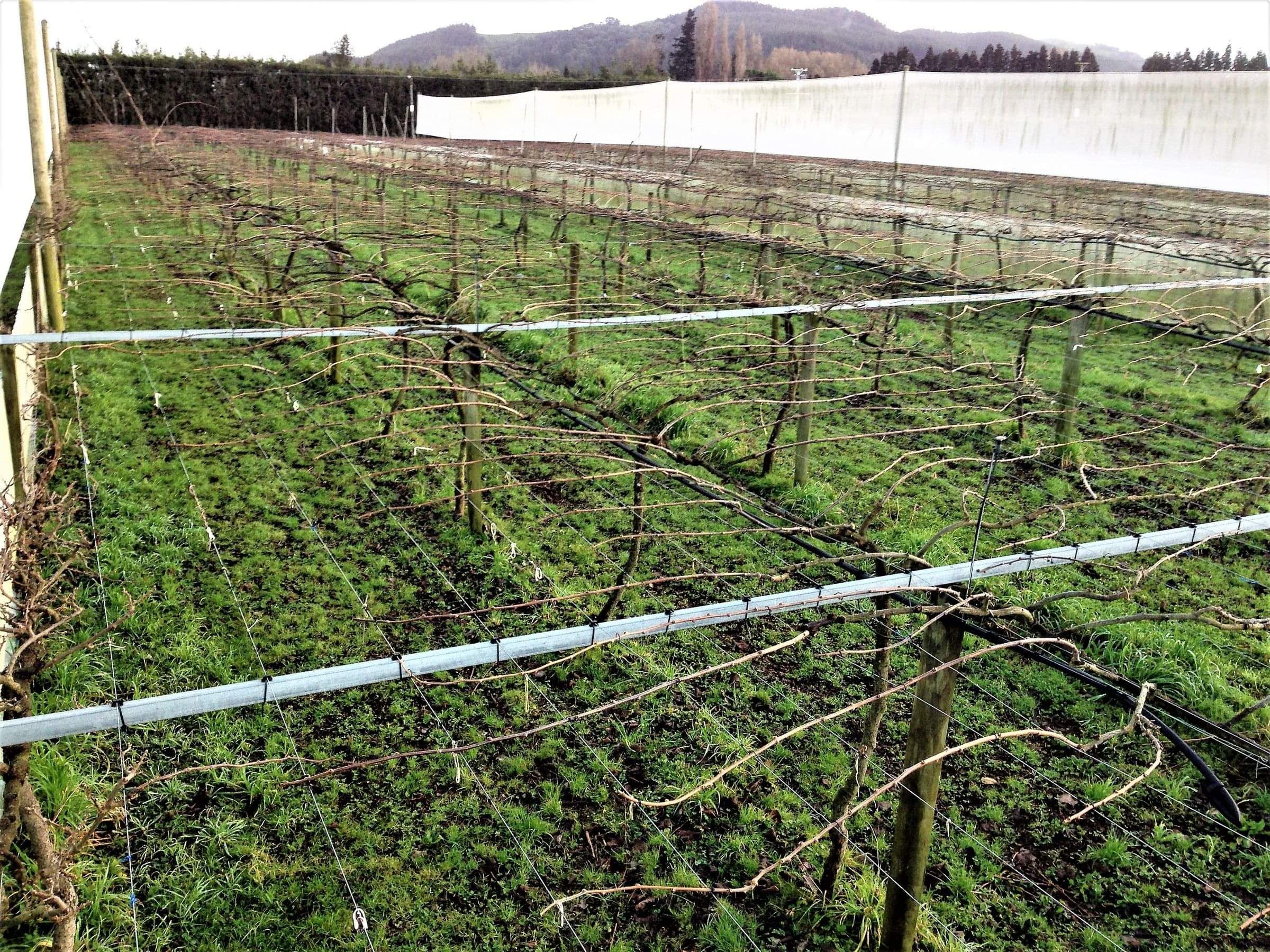
Planting and Grafting
Establishing and growing vines takes time and commitment. The process of getting vines up and onto the structure can be a battle against nature to provide the right environment for plants to thrive.
Nutrient Management and Application
Every year before bud break, WFP undertakes a comprehensive review of all its orchard soils, measuring mineral composition that lets us know at a micro-level the necessary changes and quantities of trace elements needed in the soil.
Applying the product can be difficult with the winter rain, making orchards difficult to navigate so careful timing and driving are keys to ensuring a quality job.
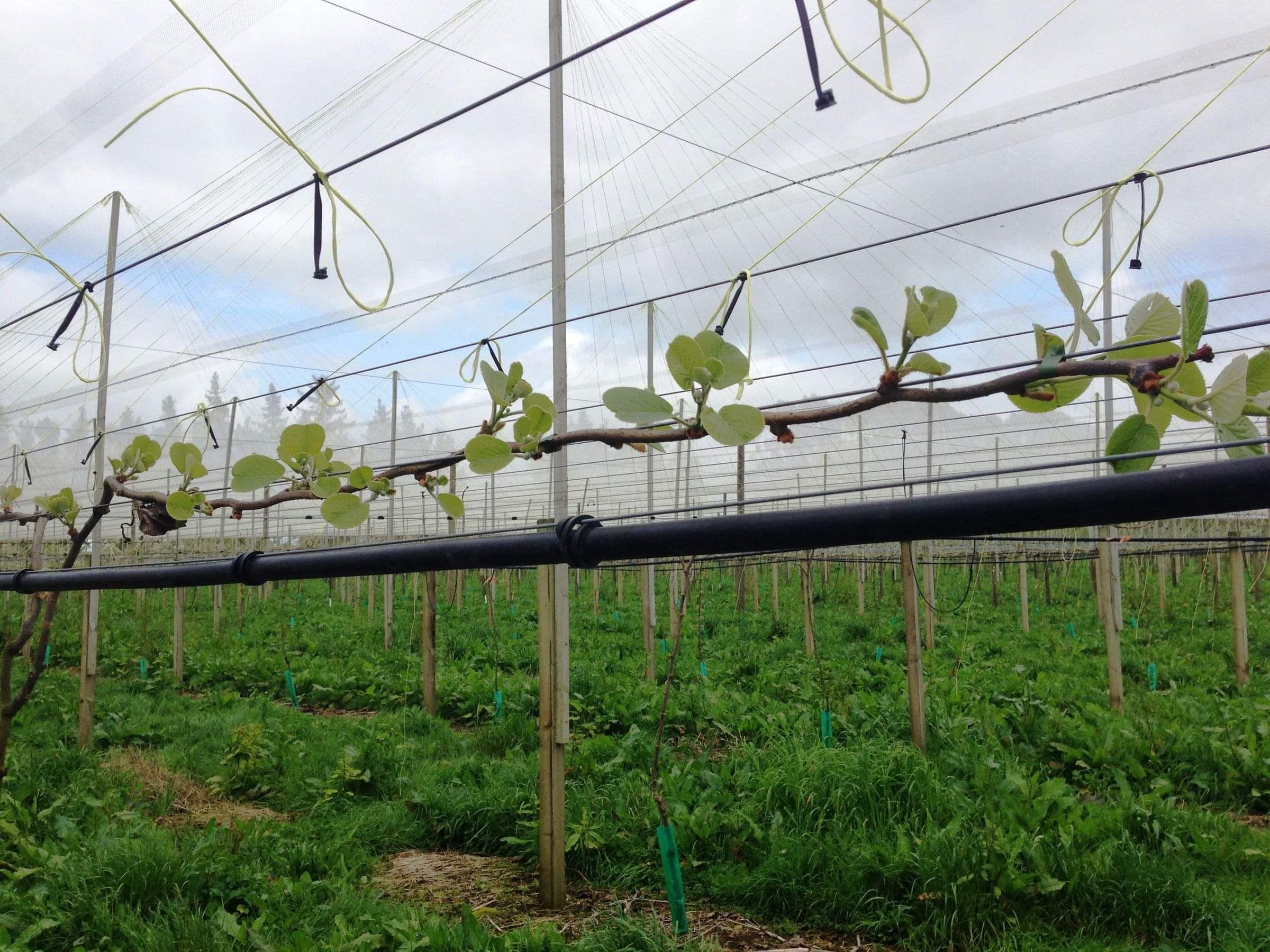
Leader Establishment and Training
Setting the plant in the direction of future growth is critical for a quality canopy. From strong leaders come strong vines and a healthy crop of kiwis.
Bud Break
Bud break is where a new season is ushered in and growth begins again. This part of the season can be high risk with the likes of birds attacking and eating new growth, frosts burning off tender growth and PSA (Pseudomonas syringae pv. actinidiae) beginning to manifest itself in the plants.
It's not all doom and gloom though as it means that another crop of kiwis are on their way!
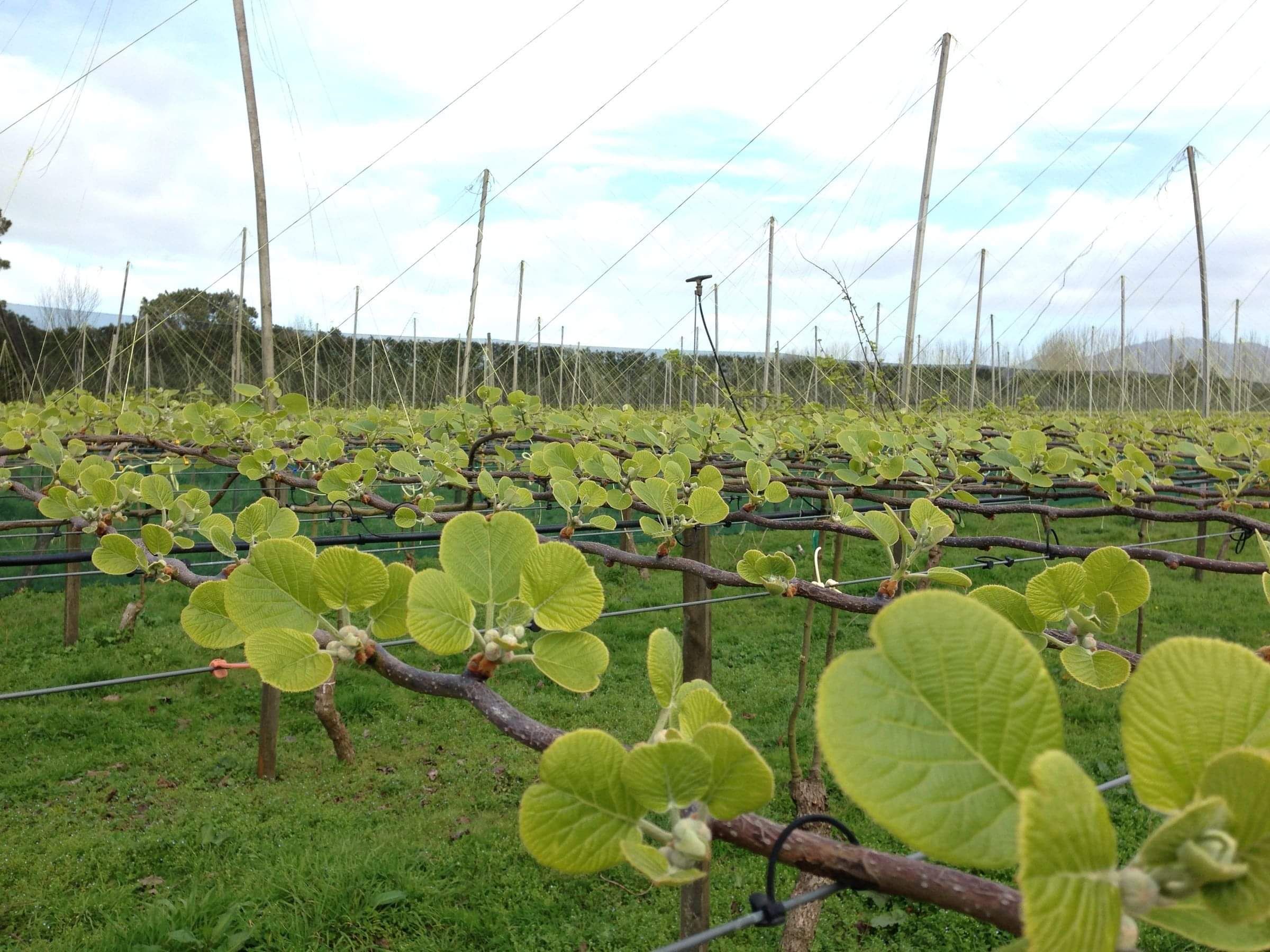

Frost Protection
Towards the end of harvest in June and the beginning of spring in September, the risk of harsh frosts is very real concern. Frosts during harvest can cause fruit to spoil, damaging the inside and turning it soft, whereas spring frosts will burn off the tender new growth on the vines.
Both occurrences are highly damaging and therefore the use of irrigation to 'encapsulate' and suspend the vines in ice and frost fans to draw warm air down are vital to ensure the canopy survives the cold winter nights.
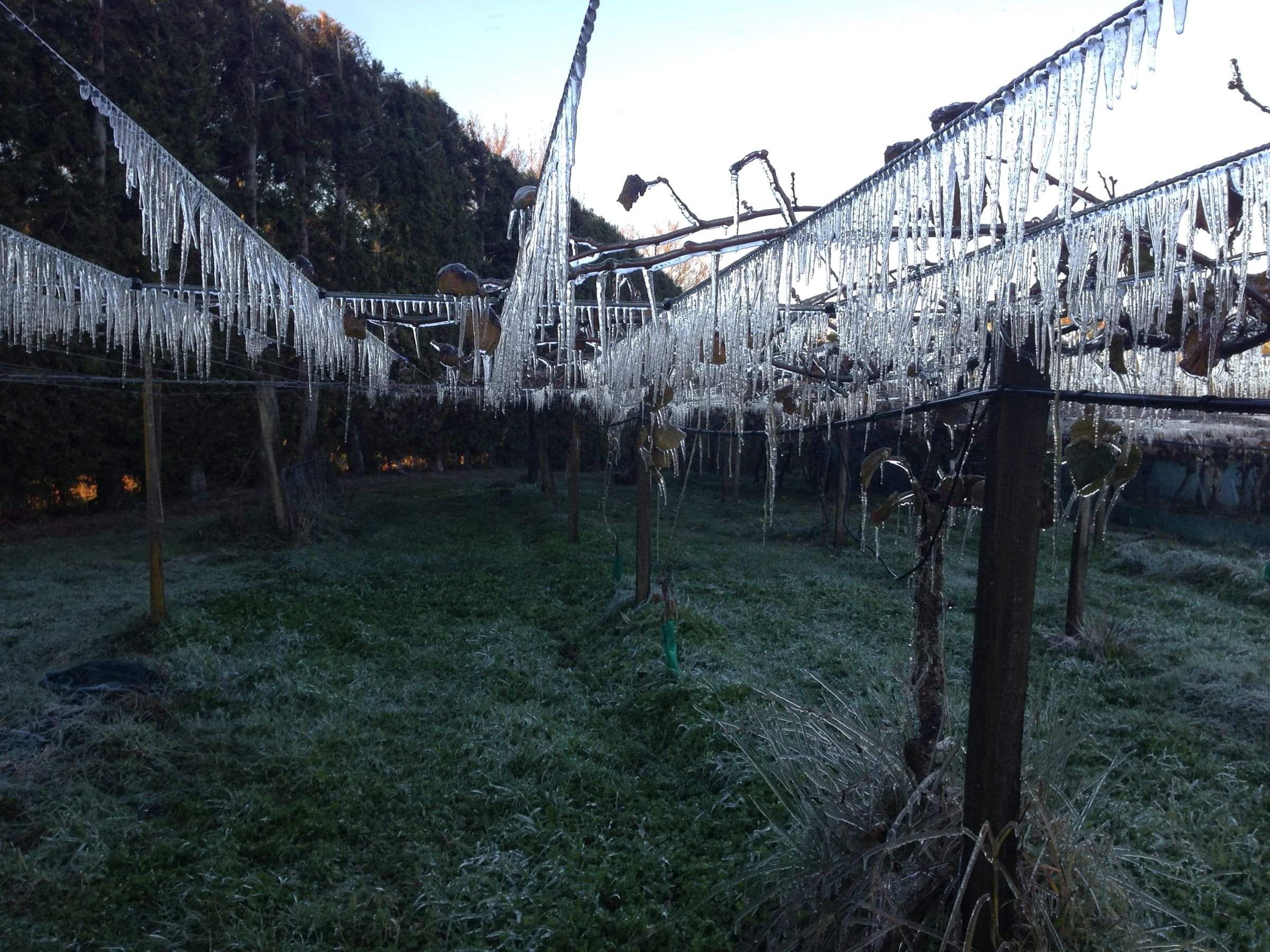
Canopy Training
For our SunGold kiwi's, training the next years growth up 'Teepees' is an annual occurrence. This comes as a time management plan more than anything as it allows us to extend the workable window of the plants later into the growing year, rather than having it all condensed within the spring.
Spraying - Pest and Disease Control
All throughout the growing season, spray applications make up a large part of managing an orchard. For our organic orchards, there are fewer selected 'certified-organic' sprays that can be applied, making it difficult to combat against certain pests and diseases. Conventional orchards on the other hand have a few more tools available.

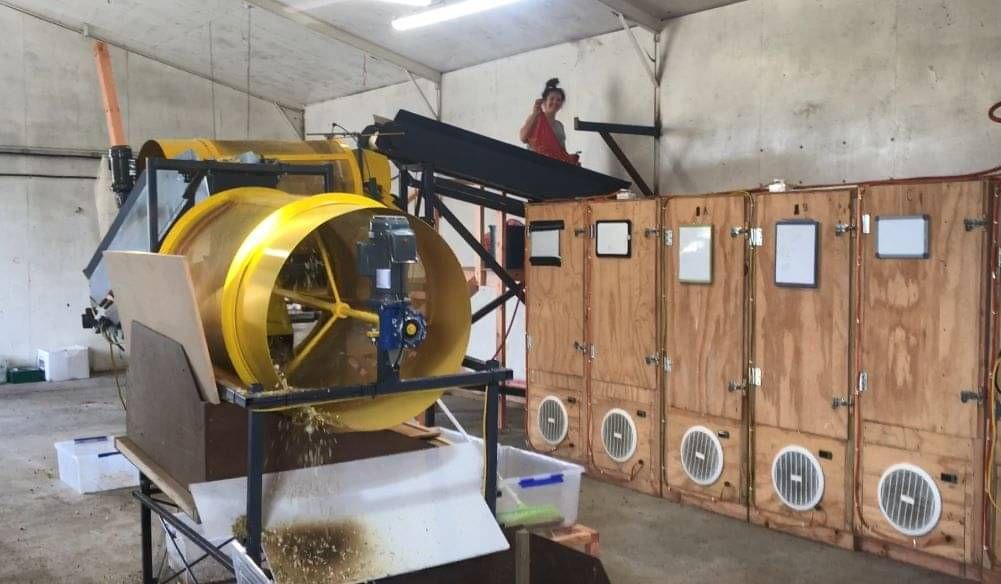
Pollen Harvesting
Male flowers open earlier than the female, which allows us to pick them and extract the pollen. Once this is done, the pollen can be applied artificially to pollinate the female flowers once they are blooming.
Flowering and Pollination
This comes as another critical time in the growing season. WFP uses a combination of bees as well as artificially 'sprayed-on' techniques to get the right result for pollination.
A well pollinated fruit is characterised by a well-formed and shaped fruit with a high count of black seeds and these are the fruit that we always aim to produce.
Summer Pruning
One thing that kiwifruit love to do is grow, so part of keeping it in check is to summer prune. This ensures there is sufficient light getting into the canopy and as well as not letting the wrong shoots and canes grow out of control.
Getting it right is awfully simply, but get it wrong and it's simply awful!
Girdling
At certain points throughout spring and summer our vines are girdled, giving them an extra boost at critical times. Pre-flower, size and taste girdles are implemented to redirect energy produced in the plant, sending it to the necessary areas which strengthens flower stems and improves both size and taste.
Bud and Fruit Thinning
Not every fruit meets export standards, therefore removing particular fruit and buds at critical times can help the remaining fruit to reach the proper size, taste and grade targets.
Bud thinning occurs in the small window before flowering, where the shape of the bud itself indicates what the fruit will look like post-pollination, where as fruit thinning occurs in the months leading up to harvest, ideally the sooner the better when it comes to thinning.
Maturity Monitoring and Clearance
Prior to harvesting the fruit off the vines, we undertake several tests on the fruit to make sure it is mature and that it has reached the desired taste and sugar levels.
Testing can occur several times as it may not reach the minimum taste standards and can be a game of patience, waiting for the exact right time to get into picking.
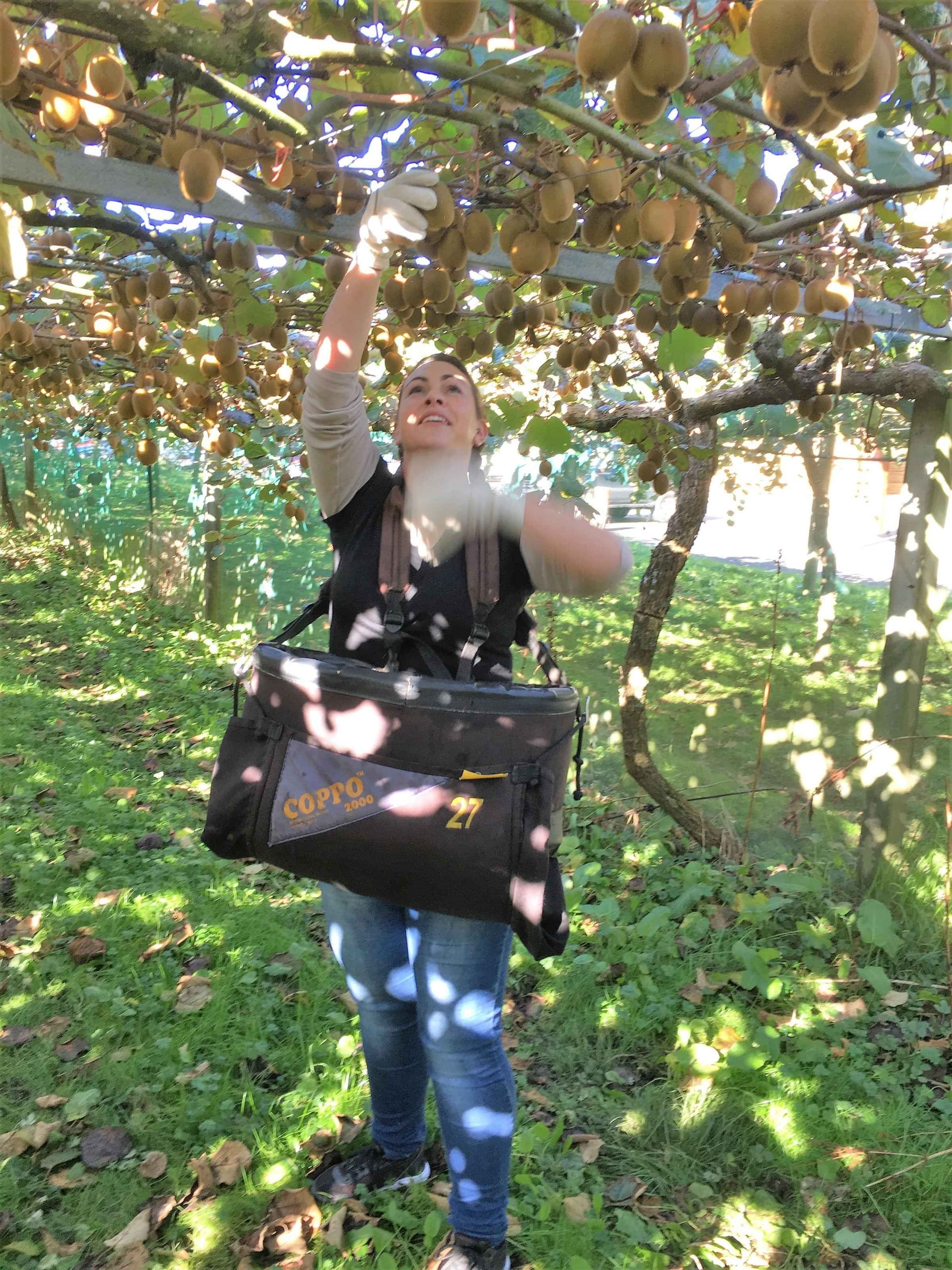
Picking at Harvest
The crunch time of the growing season! Once fruit has been cleared to pick it's go time. Our logistics team organises getting equipment on site, our teams of pickers are called in and the rest is history.
It's a busy time on site with trucks bringing in empty bins and hauling out the full, forklifts shuffling bins and loading bin trailers, tractors carting bins and small armies of people picking off the vines. It's quite an art form getting the fruit from the vines and into the packhouse.

Final Stop Before Packing
This marks the end of our outdoor teams input and our post-harvest team takes over from here. For the sake of tractability all fruit is segregated by orchard, maturity area, the date it was picked and who it was picked by, ensuring fruit quality throughout the entire process.
During harvest, it's a full time job keeping the trucks rolling in and out by getting the full bins off and empty bins back on, luckily we have skilled team who make a fine art of it.
